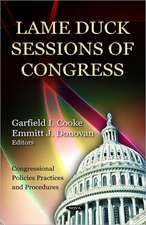Economic Aspects of German Unification: Expectations, Transition Dynamics and International Perspectives
Editat de Paul J.J. Welfensen Limba Engleză Paperback – 24 noi 2011
Preț: 409.13 lei
Nou
Puncte Express: 614
Preț estimativ în valută:
78.28€ • 81.96$ • 64.78£
78.28€ • 81.96$ • 64.78£
Carte tipărită la comandă
Livrare economică 05-19 aprilie
Preluare comenzi: 021 569.72.76
Specificații
ISBN-13: 9783642799747
ISBN-10: 3642799744
Pagini: 552
Ilustrații: XV, 531 p.
Dimensiuni: 170 x 242 x 29 mm
Greutate: 0.91 kg
Ediția:2nd ed. 1996. Softcover reprint of the original 2nd ed. 1996
Editura: Springer Berlin, Heidelberg
Colecția Springer
Locul publicării:Berlin, Heidelberg, Germany
ISBN-10: 3642799744
Pagini: 552
Ilustrații: XV, 531 p.
Dimensiuni: 170 x 242 x 29 mm
Greutate: 0.91 kg
Ediția:2nd ed. 1996. Softcover reprint of the original 2nd ed. 1996
Editura: Springer Berlin, Heidelberg
Colecția Springer
Locul publicării:Berlin, Heidelberg, Germany
Public țintă
ResearchCuprins
Introduction: Economic Aspects of German Unification.- I. Structural and Macroeconomic Changes.- A. The Structural Renewal of Eastern Germany: Some Initial Observations.- B. Integrating the East German States into the German Economy: Opportunities, Burdens and Options.- C. Sectoral Shocks and Structural Adjustment in the East German Transformation Process.- D. Intergovernmental Fiscal Relations after German Unification: Problems and Solutions.- E. Macroeconomic Aspects of German Unification.- F. Comments.- G. Transforming a Socialist Economy: Currency Unification, Banking Reform and Capital Markets.- H. Comments.- II. National Challenges.- I. Labor Markets and Social Security Systems Facing Unification: Systemic Challenges in Germany.- J. Comments.- K. Environmental Protection: Problems and Prospects in East and West Germany.- L. Comments.- M. Structural Adjustment and Privatization of the East German Economy.- N. Comments.- O. Government Support for Restructuring the East German Economy.- P. Comments.- III. International Perspectives.- Q. German Economic Unification and European Integration: Prosperity without Stability?.- R. External Aspects of German Unification: The Polish View.- S. Comments.- T. Economic Reform in the USSR and Prospects for Trade and Economic Relations with Unified Germany.- U. Comments.- V. German Unification as an Incentive for Institutional and Organizational Changes within the EC: A French View.- W. Global Economic Rivalry: New Perspectives on Germany (the EC), Japan and the United States.- X. Comments.- Y. EC Integration and Economic Reforms in CMEA Countries: A United Germany as a Bridge Between East and West?.- Z. Comments.- Map of Western and Eastern Germany.- Appendix: Selected Data on Western German and Eastern Germany.- List of Authors and Conference Participants.- List of Tables and Figures.












